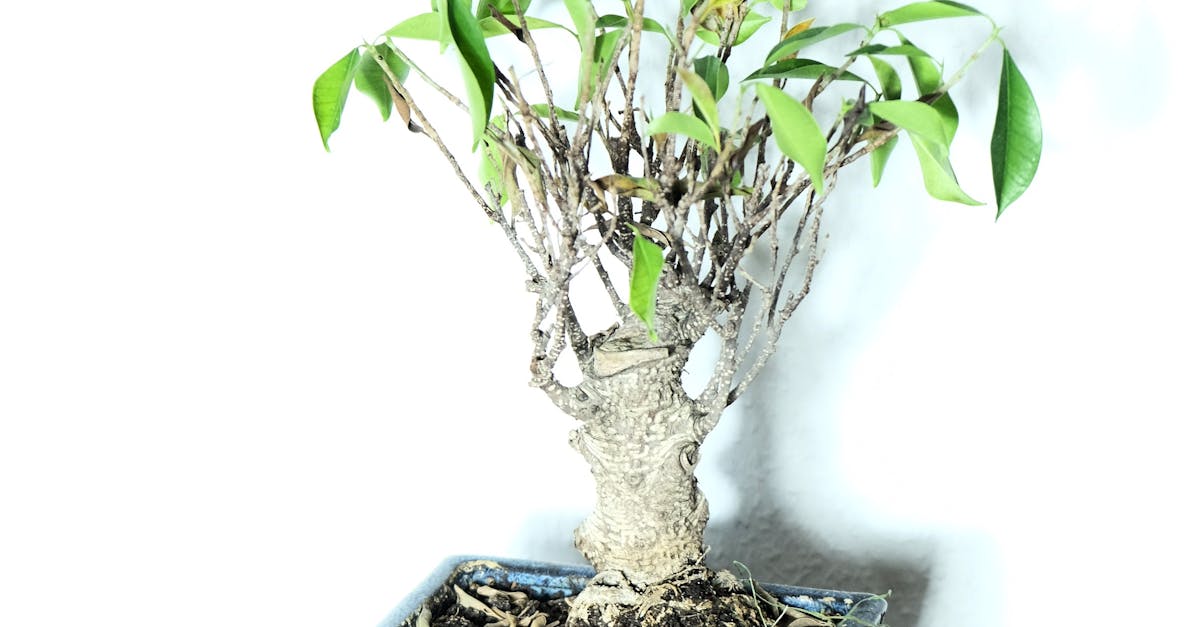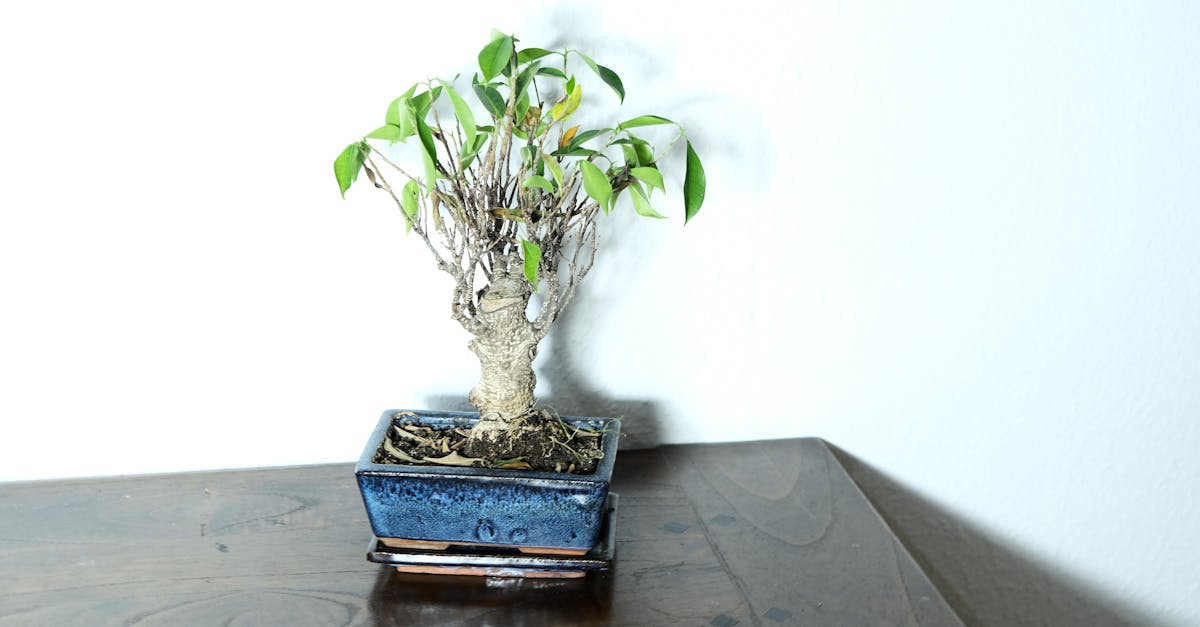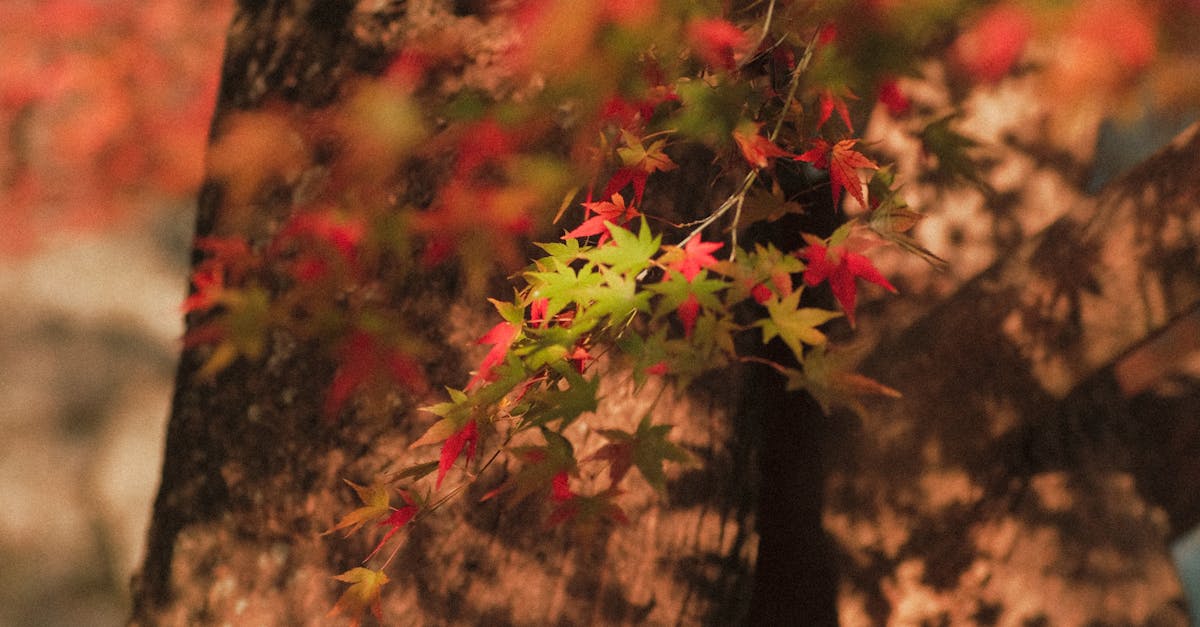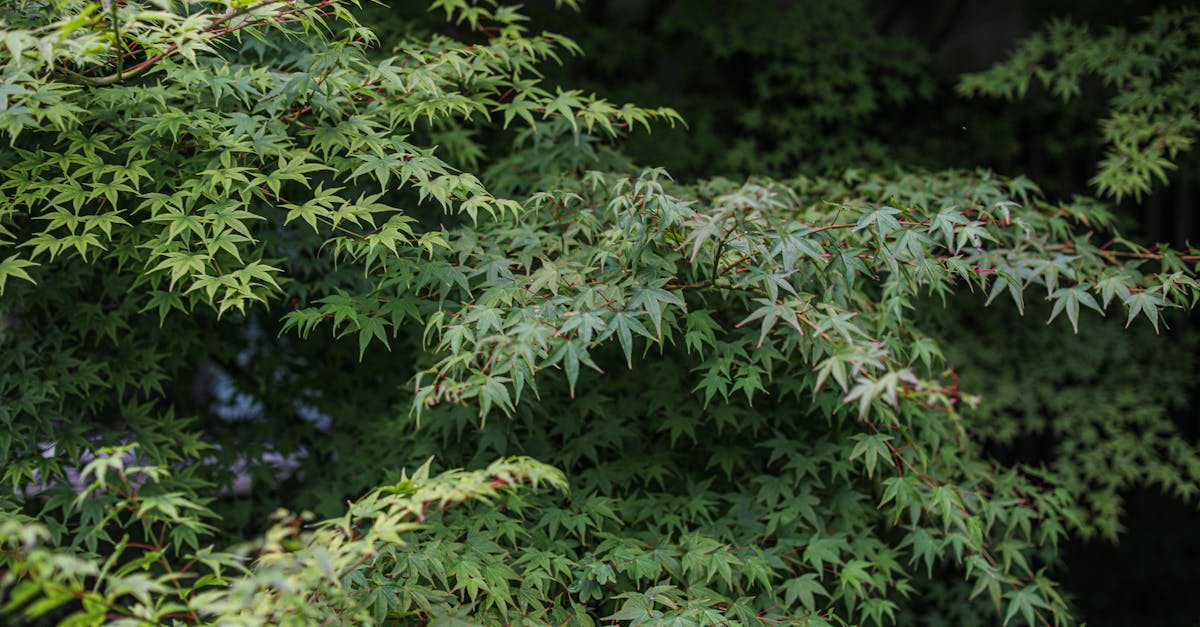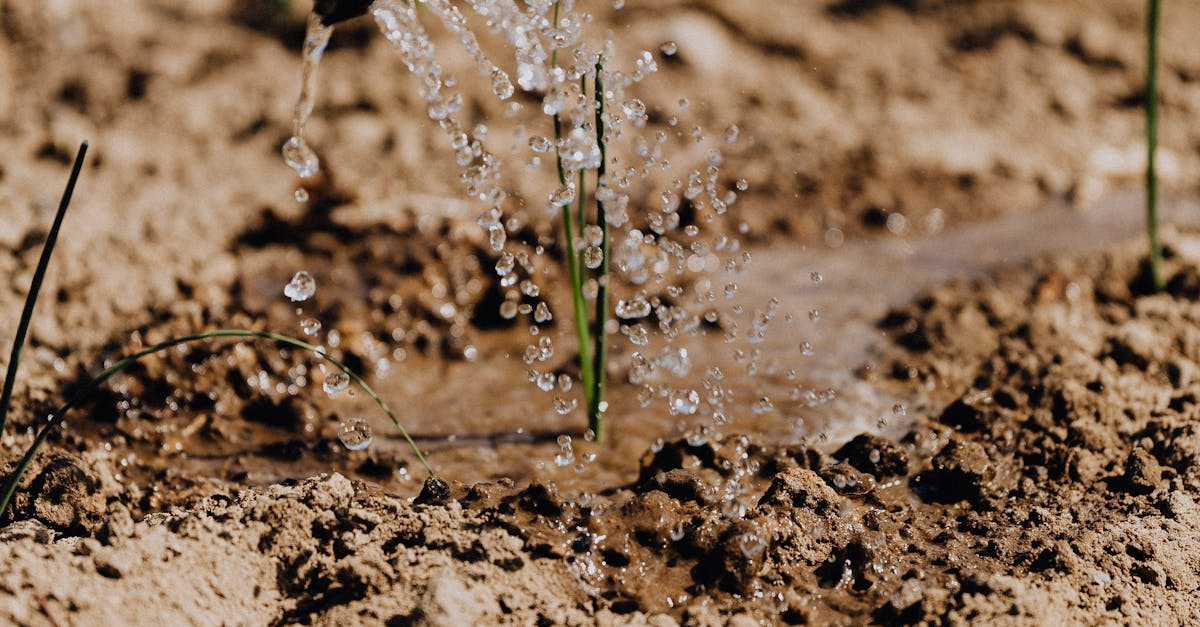Cultivating Harmony: A Comprehensive Guide to Shohin Bonsai
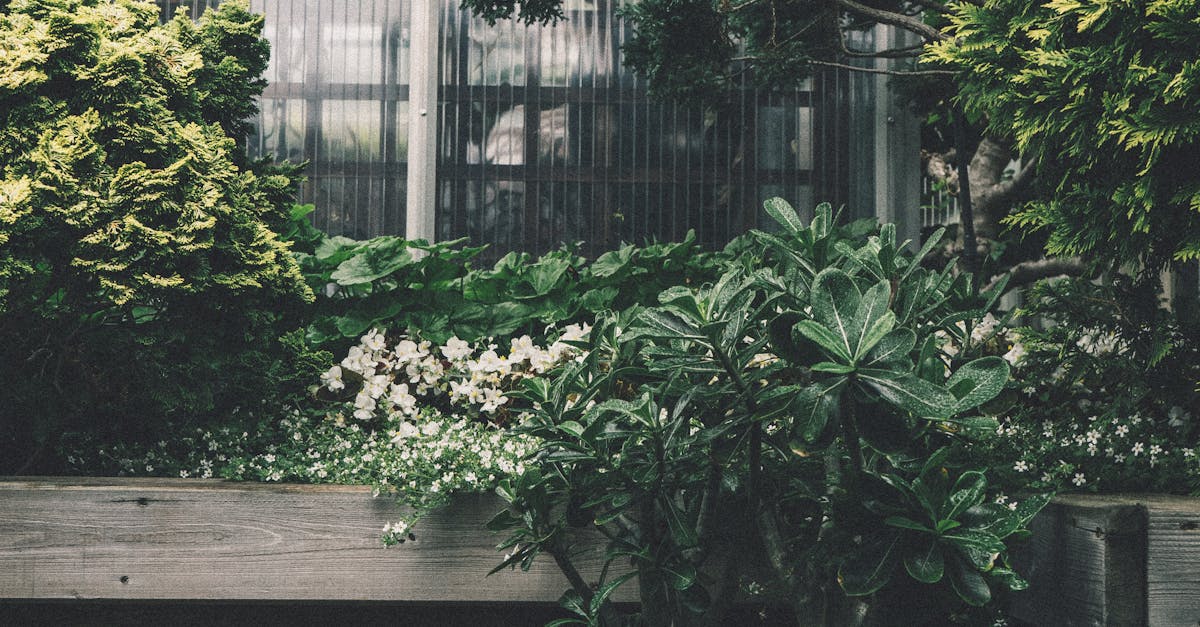
Shohin Bonsai: A Harmonious Dance of Nature and Art
Welcome to the alluring world of Shohin bonsai, where miniature trees are transformed into captivating works of art. Shohin bonsai, meaning “small tray,” is a unique Japanese art form that involves cultivating and styling tiny trees in shallow containers. These exquisite creations bring the beauty of nature indoors, offering a serene and contemplative experience. In this comprehensive guide, we will embark on a journey through the enchanting realm of Shohin bonsai. We will delve into the history, techniques, and challenges associated with this delicate and rewarding art form. From selecting the perfect tree to mastering advanced styling techniques, you will gain the knowledge and inspiration to cultivate and nurture your own miniature masterpiece.
Dive into a World of Miniature Masterpieces – Shohin Bonsai
Embrace the ancient tradition and horticultural artistry of Shohin bonsai, where trees are meticulously cultivated to emulate the grandeur of nature in miniature form. Shohin bonsai, literally translating to “small pot,” showcases tiny trees artfully arranged in shallow containers. Originating in Japan centuries ago, these diminutive trees have captivated enthusiasts with their ability to evoke the vastness of landscapes within a confined space. Immerse yourself in the intricate details and natural beauty of Shohin bonsai, where each leaf, branch, and root tells a captivating story.
1. Introduction to Shohin Bonsai
Introduction to Shohin Bonsai: A Journey into Miniature Masterpieces
Shohin bonsai is the enchanting art of cultivating and styling miniature trees in shallow containers. Originating in Japan centuries ago, this ancient tradition combines horticultural artistry with a deep appreciation for nature’s beauty. Shohin bonsai, literally translating to “small pot,” showcases tiny trees artfully arranged in containers that are typically no larger than a few inches in diameter.
The history of Shohin bonsai is intertwined with the broader tradition of bonsai, which has been practiced in Japan for over a millennium. While the exact origins of Shohin bonsai are not entirely clear, it is believed to have emerged as a distinct art form during the Edo period (1603-1868). During this time, there was a growing interest in miniature arts and crafts, and Shohin bonsai became a popular way to bring the beauty of nature into small, urban spaces.
Today, Shohin bonsai is practiced by enthusiasts around the world. It is particularly popular in Japan, where it is considered a refined and elegant art form. Shohin bonsai trees are often displayed in homes, offices, and temples, where they are admired for their beauty and tranquility.
Definition and Characteristics
Definition and Characteristics: Unveiling the Essence of Shohin Bonsai
Shohin bonsai trees are defined by their diminutive size and delicate features. They are typically no taller than 20 centimeters (8 inches) and are often much smaller. The scale of Shohin bonsai allows them to be displayed in small spaces, making them ideal for homes, offices, and other indoor environments.
Despite their small size, Shohin bonsai trees exhibit all the characteristics of larger bonsai trees. They have a well-defined trunk, branches, and leaves, and they are carefully shaped and pruned to create a harmonious and balanced composition. Shohin bonsai trees also display a variety of unique features that distinguish them from larger bonsai trees. These features include:
- Shari and Jin: Shari are areas of deadwood on the trunk or branches of a tree, while jin are dead branches that have been left intact. These features add age and character to a Shohin bonsai tree and help to create a sense of realism.
- Nebari: Nebari refers to the exposed roots of a tree. In Shohin bonsai, the roots are often carefully exposed and shaped to create a visually interesting and dynamic composition.
- Miniature leaves: Shohin bonsai trees have smaller leaves than larger bonsai trees. This is due to the fact that they are grown in smaller pots and have less access to nutrients. The small leaves add to the delicate and refined beauty of Shohin bonsai trees.
Origins and History
Origins and History: Tracing the Roots of Shohin Bonsai
The origins of Shohin bonsai can be traced back to the ancient Chinese art of penjing, which involves creating miniature landscapes in shallow containers. Penjing was introduced to Japan in the 6th century and gradually evolved into the distinct art form of bonsai.
During the Edo period (1603-1868), there was a growing interest in miniature arts and crafts in Japan. This led to the development of Shohin bonsai, which became a popular way to bring the beauty of nature into small, urban spaces.
Shohin bonsai quickly gained popularity among the Japanese elite and was often displayed in homes, offices, and temples. It was also used as a form of meditation and contemplation. Today, Shohin bonsai is practiced by enthusiasts around the world and is considered a refined and elegant art form.
2. Choosing and Preparing Materials

Choosing and Preparing Materials: Laying the Foundation for Your Shohin Bonsai
The first step in creating a Shohin bonsai is to choose the right materials. This includes selecting a tree, a pot, and soil.
Tree Selection:
The choice of tree is crucial for a successful Shohin bonsai. The best trees for Shohin bonsai are those that have small leaves and a compact growth habit. Some popular choices include:
- Japanese maple
- Chinese elm
- Juniper
- Pine
- Spruce
Pot Selection:
The pot for your Shohin bonsai should be shallow and wide, with a diameter of no more than 6 inches. The pot should also have drainage holes to prevent the roots from rotting. Glazed or unglazed ceramic pots are both suitable for Shohin bonsai.
Soil Preparation:
The soil for your Shohin bonsai should be well-draining and aerated. A good soil mix for Shohin bonsai consists of akadama (a type of Japanese clay), pumice, and lava rock. You can also add a small amount of organic matter, such as compost or peat moss.
Tree Selection
Tree Selection: Choosing the Perfect Specimen for Your Shohin Bonsai
The choice of tree is crucial for a successful Shohin bonsai. The best trees for Shohin bonsai are those that have small leaves and a compact growth habit. They should also be able to tolerate the restricted root growth that is necessary for bonsai cultivation.
Some of the most popular tree species used for Shohin bonsai include:
- Japanese maple (Acer palmatum): Japanese maples are prized for their beautiful foliage, which turns vibrant shades of red, orange, and yellow in the fall. They are also relatively easy to care for, making them a good choice for beginners.
- Chinese elm (Ulmus parvifolia): Chinese elms are known for their small, glossy leaves and their ability to withstand a variety of growing conditions. They are also very tolerant of pruning, which makes them ideal for bonsai.
- Juniper (Juniperus procumbens): Junipers are coniferous trees that are known for their dense, needle-like foliage. They are very slow-growing, which makes them a good choice for Shohin bonsai.
- Pine (Pinus spp.): Pines are another popular choice for Shohin bonsai. They have small, needle-like leaves and a compact growth habit. Pines are also very hardy trees, which makes them well-suited for outdoor cultivation.
When selecting a tree for Shohin bonsai, it is important to consider the size, shape, and overall health of the tree. You should also choose a tree that has a good root system and that is free of pests and diseases.
Pot Selection
Pot Selection: Choosing the Perfect Container for Your Shohin Bonsai
The pot is an important element of a Shohin bonsai. It provides support for the tree and helps to create the overall composition. The choice of pot should be based on the size, shape, and style of the tree.
There are two main types of pots used in Shohin bonsai: glazed and unglazed. Glazed pots are coated with a vitreous material that makes them waterproof and resistant to staining. Unglazed pots are not coated and are therefore more porous.
Glazed pots are more popular for Shohin bonsai because they are more durable and easier to care for. They are also available in a wider variety of colors and styles. Unglazed pots are more traditional and can give a more rustic look to a Shohin bonsai.
When choosing a pot for your Shohin bonsai, it is important to consider the following factors:
- Size: The pot should be large enough to accommodate the root system of the tree, but not so large that it overwhelms the tree.
- Shape: The shape of the pot should complement the shape of the tree. For example, a round pot is a good choice for a tree with a rounded canopy.
- Style: The style of the pot should match the style of the tree. For example, a traditional pot is a good choice for a tree with a traditional style.
The pot is an important part of a Shohin bonsai and should be chosen carefully. By following these tips, you can choose the perfect pot for your tree and create a beautiful and harmonious composition.
Soil Preparation
Soil Preparation: Creating the Perfect Growing Medium for Your Shohin Bonsai
The soil is an important component of a Shohin bonsai. It provides nutrients and support for the tree and helps to regulate its water and oxygen intake. The ideal soil for Shohin bonsai is well-draining and aerated. It should also be able to retain moisture and nutrients.
There are many different soil mixes that can be used for Shohin bonsai. A good basic mix consists of akadama (a type of Japanese clay), pumice, and lava rock. You can also add a small amount of organic matter, such as compost or peat moss.
When preparing the soil for your Shohin bonsai, it is important to mix it thoroughly. This will help to ensure that the soil is evenly distributed and that there are no air pockets. You should also make sure that the soil is moist, but not soggy.
Once you have prepared the soil, you can add it to the pot. Be sure to pack the soil firmly around the roots of the tree. You should also leave a small amount of space at the top of the pot for watering.
The soil is an important part of a Shohin bonsai and should be prepared carefully. By following these tips, you can create the perfect growing medium for your tree and help it to thrive.
3. Growing Techniques for Shohin Bonsai
Growing Techniques for Shohin Bonsai: Nurturing and Shaping Your Miniature Masterpiece
Growing Shohin bonsai is a delicate and rewarding art form that requires patience and skill. There are a number of essential techniques that you need to master in order to keep your Shohin bonsai healthy and beautiful.
Watering:
Watering is one of the most important aspects of Shohin bonsai care. Shohin bonsai trees need to be watered regularly, but not too much. The soil should be moist but not soggy. The best way to water a Shohin bonsai is to use a watering can with a fine spout. Water the tree slowly and evenly until the water starts to drain out of the bottom of the pot.
Fertilizing:
Shohin bonsai trees need to be fertilized regularly to provide them with the nutrients they need to grow and thrive. A good quality bonsai fertilizer should be used according to the manufacturer’s instructions.
Pruning:
Pruning is an essential technique for shaping and maintaining the desired form of your Shohin bonsai. Pruning should be done carefully and with a sharp pair of pruning shears. When pruning, you should always remove dead or diseased branches first. You should also remove any branches that are growing in the wrong direction or that are too thick.
Wiring:
Wiring is a technique that is used to bend and shape the branches of your Shohin bonsai. Wiring should be done carefully and with the proper wire. The wire should be wrapped around the branch in a spiral pattern and should be tightened gradually over time.
By following these essential growing techniques, you can keep your Shohin bonsai healthy and beautiful for many years to come.
Watering and Fertilizing
Watering and Fertilizing: Nurturing Your Shohin Bonsai
Watering and fertilizing are two of the most important aspects of Shohin bonsai care. Watering your tree regularly will help to keep it healthy and prevent it from drying out. Fertilizing your tree will provide it with the nutrients it needs to grow and thrive.
Watering:
The best way to water a Shohin bonsai is to use a watering can with a fine spout. Water the tree slowly and evenly until the water starts to drain out of the bottom of the pot. Avoid overwatering your tree, as this can lead to root rot.
The frequency of watering will vary depending on the climate and the type of tree you have. In general, you should water your Shohin bonsai tree every 2-3 days during the summer and every 5-7 days during the winter.
Fertilizing:
Shohin bonsai trees need to be fertilized regularly to provide them with the nutrients they need to grow and thrive. A good quality bonsai fertilizer should be used according to the manufacturer’s instructions.
The frequency of fertilization will vary depending on the type of fertilizer you are using. In general, you should fertilize your Shohin bonsai tree every 2-3 weeks during the growing season and every 4-6 weeks during the winter.
By following these watering and fertilizing tips, you can keep your Shohin bonsai healthy and beautiful for many years to come.
Pruning and Wiring
Pruning and Wiring: Shaping and Maintaining Your Shohin Bonsai
Pruning and wiring are two essential techniques for shaping and maintaining the desired form of your Shohin bonsai. Pruning involves removing branches and leaves to create a specific shape or style. Wiring involves bending and shaping the branches to create the desired form.
Pruning:
Pruning should be done carefully and with a sharp pair of pruning shears. When pruning, you should always remove dead or diseased branches first. You should also remove any branches that are growing in the wrong direction or that are too thick.
There are many different pruning techniques that can be used to create different shapes and styles. Some of the most common pruning techniques include:
- Pinch pruning: This technique involves pinching off the tips of new growth to encourage branching.
- Bud pruning: This technique involves removing buds to control the growth of the tree.
- Root pruning: This technique involves removing some of the roots to control the size of the tree.
Wiring:
Wiring is a technique that is used to bend and shape the branches of your Shohin bonsai. Wiring should be done carefully and with the proper wire. The wire should be wrapped around the branch in a spiral pattern and should be tightened gradually over time.
Wiring can be used to create a variety of different shapes and styles. Some of the most common wiring techniques include:
- Single-wire technique: This technique involves wrapping a single wire around the branch and then bending the branch into the desired shape.
- Double-wire technique: This technique involves wrapping two wires around the branch and then bending the branch into the desired shape.
- Guy-wire technique: This technique involves using a wire to support a branch that is too weak to stand on its own.
By following these pruning and wiring techniques, you can shape and maintain the desired form of your Shohin bonsai.
Repotting
Repotting: Refreshing the Roots of Your Shohin Bonsai
Repotting is an important part of Shohin bonsai care. It allows you to inspect the roots of your tree, prune them if necessary, and replace the old soil with fresh soil. Repotting should be done every 2-3 years, or more often if the tree is growing rapidly.
Frequency:
The frequency of repotting will vary depending on the type of tree you have and the climate in which you live. In general, you should repot your Shohin bonsai tree every 2-3 years. If the tree is growing rapidly, you may need to repot it more often.
Techniques:
Repotting a Shohin bonsai tree is a delicate procedure that should be done carefully. The following steps will help you to repot your tree successfully:
- Remove the tree from its pot. Gently tap the sides of the pot to loosen the soil. Then, carefully lift the tree out of the pot.
- Inspect the roots. Once the tree is out of the pot, inspect the roots for any signs of damage or disease. If you find any damaged or diseased roots, you should prune them off.
- Prune the roots. If the roots are too long or thick, you may need to prune them. Use a sharp pair of pruning shears to remove any excess roots.
- Replace the soil. Once you have pruned the roots, you can replace the old soil with fresh soil. Use a well-draining soil mix that is specifically designed for bonsai trees.
- Repot the tree. Place the tree in the new pot and fill in the space around the roots with soil. Tamp down the soil gently to remove any air pockets.
- Water the tree. Once the tree is repotted, water it thoroughly.
By following these steps, you can repot your Shohin bonsai tree successfully and help it to continue to thrive.
4. Styling Techniques for Shohin Bonsai
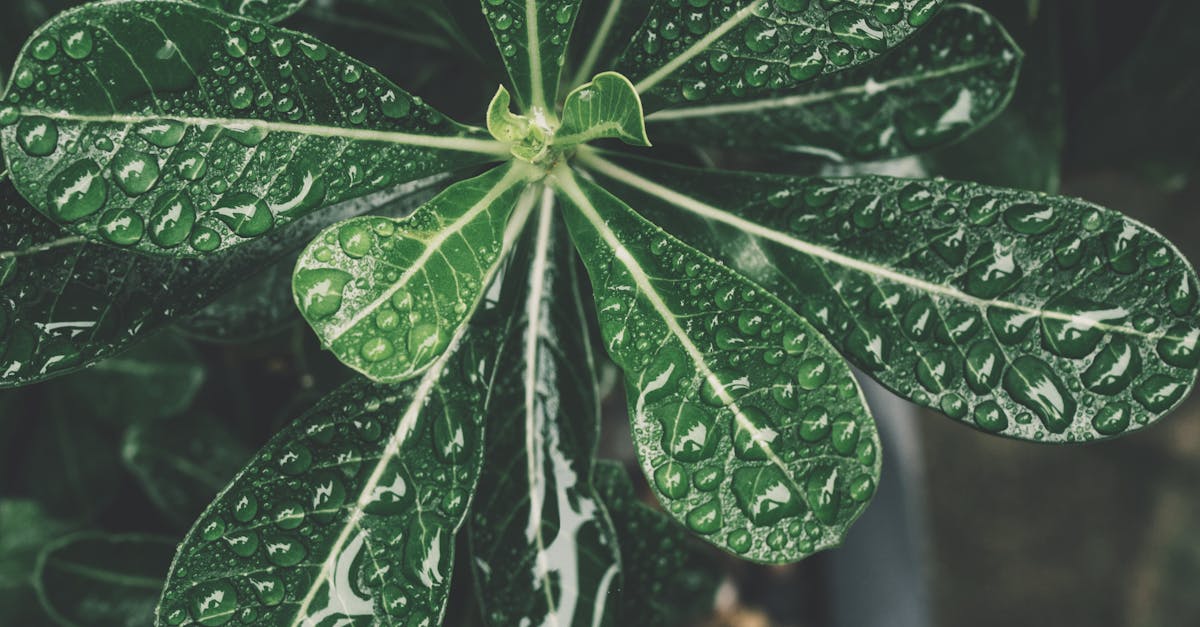
Styling Techniques for Shohin Bonsai: Elevating the Art of Miniature Masterpieces
Once you have mastered the basic techniques of Shohin bonsai care, you can begin to explore more advanced styling techniques. These techniques will allow you to enhance the aesthetics and character of your Shohin bonsai and create a truly unique work of art.
Jin and Shari:
Jin and shari are techniques that are used to create deadwood and weathered effects on your Shohin bonsai. Jin refers to dead branches that have been left intact, while shari refers to areas of deadwood on the trunk or branches. These techniques can add age and character to your Shohin bonsai and help to create a more realistic appearance.
Nebari Development:
Nebari refers to the exposed roots of a tree. In Shohin bonsai, the roots are often carefully exposed and shaped to create a visually interesting and dynamic composition. Nebari development can help to create the illusion of a larger, more mature tree and can add a sense of strength and stability to your Shohin bonsai.
Accessories and Display:
Accessories and display can play an important role in enhancing the overall presentation of your Shohin bonsai. Stands, trays, and other accessories can help to create a more elegant and sophisticated look. You can also use accessories to create a specific scene or mood, such as a miniature landscape or a tea ceremony.
By mastering these advanced styling techniques, you can take your Shohin bonsai to the next level and create a truly unique and beautiful work of art.
Jin and Shari
Jin and Shari: Adding Age and Character to Your Shohin Bonsai
Jin and shari are two techniques that are used to create deadwood and weathered effects on your Shohin bonsai. Jin refers to dead branches that have been left intact, while shari refers to areas of deadwood on the trunk or branches. These techniques can add age and character to your Shohin bonsai and help to create a more realistic appearance.
Jin:
To create jin, you will need to remove the leaves and bark from a branch. You can do this with a sharp knife or a pair of pliers. Once the leaves and bark have been removed, you will need to let the branch dry out. This can take several weeks or months.
Once the branch is dry, you can use a wire brush or a piece of sandpaper to smooth out the edges of the deadwood. You can also use a wood burner to create a more realistic texture.
Shari:
To create shari, you will need to remove a section of the bark from the trunk or a branch. You can do this with a sharp knife or a chisel. Once the bark has been removed, you will need to let the area dry out. This can take several weeks or months.
Once the area is dry, you can use a wire brush or a piece of sandpaper to smooth out the edges of the deadwood. You can also use a wood burner to create a more realistic texture.
Jin and shari are advanced techniques that can add age and character to your Shohin bonsai. However, it is important to use these techniques sparingly. Too much deadwood can make your tree look unnatural and unhealthy.
Nebari Development
Nebari Development: Uncovering the Beauty of Exposed Roots
Nebari refers to the exposed roots of a tree. In Shohin bonsai, the roots are often carefully exposed and shaped to create a visually interesting and dynamic composition. Nebari development can help to create the illusion of a larger, more mature tree and can add a sense of strength and stability to your Shohin bonsai.
To develop nebari, you will need to carefully remove the soil from around the base of the trunk. You can do this with a small trowel or a pair of chopsticks. Once the soil has been removed, you will be able to see the roots of the tree.
You can then use a pair of pruning shears to remove any excess roots. You should also use a wire brush or a piece of sandpaper to smooth out the edges of the roots.
Once the roots have been exposed and shaped, you can apply a root stimulator to help them to grow and develop. You can also use a fertilizer to help to strengthen the roots.
Nebari development is a slow and gradual process. It can take several years to develop a good nebari. However, the results are worth it. A well-developed nebari can add a lot of beauty and character to your Shohin bonsai.
Accessories and Display
Accessories and Display: Enhancing the Presentation of Your Shohin Bonsai
Accessories and display can play an important role in enhancing the overall presentation of your Shohin bonsai. Stands, trays, and other accessories can help to create a more elegant and sophisticated look. You can also use accessories to create a specific scene or mood, such as a miniature landscape or a tea ceremony.
Stands:
Stands are used to elevate your Shohin bonsai and bring it to eye level. This makes it easier to appreciate the beauty of the tree and its composition. Stands come in a variety of styles, from simple wooden stands to more elaborate ceramic stands.
Trays:
Trays are used to catch any water that drains from the pot. They also help to create a more finished look and can be used to complement the style of the tree and the stand. Trays come in a variety of shapes and sizes, so you can choose one that best fits your needs.
Other Accessories:
In addition to stands and trays, there are a number of other accessories that you can use to enhance the presentation of your Shohin bonsai. These accessories include:
- Stones: Stones can be used to create a miniature landscape around your tree. They can also be used to add weight and stability to the composition.
- Figurines: Figurines can be used to add a touch of whimsy or realism to your Shohin bonsai. They can be used to represent people, animals, or other objects.
- Moss: Moss can be used to create a more natural look for your Shohin bonsai. It can be used to cover the soil or to create a miniature landscape.
By using accessories and display, you can create a truly unique and beautiful presentation for your Shohin bonsai.
5. Common Challenges and Solutions for Shohin Bonsai
Common Challenges and Solutions for Shohin Bonsai: Troubleshooting for Successful Cultivation
Growing Shohin bonsai can be a rewarding experience, but it can also be challenging. There are a number of common problems that can arise, but with the right care and attention, you can overcome these challenges and keep your Shohin bonsai healthy and beautiful.
Pest and Disease Management:
Pests and diseases can be a major problem for Shohin bonsai. The most common pests include aphids, mealybugs, and scale. The most common diseases include root rot, powdery mildew, and leaf spot.
To prevent pests and diseases, it is important to keep your Shohin bonsai clean and well-maintained. You should also inspect your tree regularly for any signs of pests or diseases. If you find any pests or diseases, you should treat them immediately.
Overwatering and Underwatering:
Overwatering and underwatering are two of the most common mistakes that Shohin bonsai growers make. Overwatering can lead to root rot, while underwatering can cause the tree to wilt and die.
To avoid overwatering, you should only water your Shohin bonsai when the soil is dry to the touch. You should also make sure that the pot has drainage holes to allow excess water to drain away.
To avoid underwatering, you should water your Shohin bonsai regularly, especially during the summer months. You should also mist the leaves of your tree regularly to help keep it hydrated.
Styling Mistakes:
Styling mistakes are another common problem that Shohin bonsai growers make. These mistakes can include pruning too much, wiring too tightly, or using the wrong techniques.
To avoid styling mistakes, it is important to learn the basic techniques of Shohin bonsai styling. You should also practice on less valuable trees before you attempt to style your more valuable trees.
Pest and Disease Management
Pest and Disease Management: Protecting Your Shohin Bonsai
Pests and diseases can be a major problem for Shohin bonsai. The most common pests include aphids, mealybugs, and scale. The most common diseases include root rot, powdery mildew, and leaf spot.
Pests:
- Aphids: Aphids are small, soft-bodied insects that feed on the sap of plants. They can cause leaves to curl and turn yellow.
- Mealybugs: Mealybugs are small, white insects that feed on the sap of plants. They can cause leaves to turn yellow and drop off.
- Scale: Scale are small, brown insects that attach themselves to the stems and leaves of plants. They can cause leaves to turn yellow and drop off.
Diseases:
- Root rot: Root rot is a fungal disease that attacks the roots of plants. It can cause the leaves to turn yellow and wilt.
- Powdery mildew: Powdery mildew is a fungal disease that forms a white powder on the leaves of plants. It can cause the leaves to turn yellow and drop off.
- Leaf spot: Leaf spot is a fungal disease that causes brown spots to form on the leaves of plants. It can cause the leaves to turn yellow and drop off.
Treatment:
There are a number of different ways to treat pests and diseases on Shohin bonsai. Some of the most common methods include:
- Insecticides: Insecticides can be used to kill pests. They are available in a variety of forms, including sprays, dusts, and granules.
- Fungicides: Fungicides can be used to kill fungi. They are available in a variety of forms, including sprays, dusts, and granules.
- Cultural practices: Cultural practices, such as proper watering and fertilization, can help to prevent pests and diseases.
It is important to identify the pest or disease that is affecting your Shohin bonsai before you begin treatment. Once you have identified the pest or disease, you can choose the appropriate treatment method.
Overwatering and Underwatering
Overwatering and Underwatering: Finding the Balance for Your Shohin Bonsai
Overwatering and underwatering are two of the most common mistakes that Shohin bonsai growers make. Overwatering can lead to root rot, while underwatering can cause the tree to wilt and die.
Overwatering:
Overwatering occurs when you water your Shohin bonsai too often or too much. The symptoms of overwatering include:
- Yellowing leaves
- Dropping leaves
- Soft and mushy roots
- Root rot
If you think your Shohin bonsai is being overwatered, you should reduce the frequency and amount of watering. You should also check the roots of the tree for signs of root rot. If you find any root rot, you should remove the affected roots and repot the tree in fresh soil.
Underwatering:
Underwatering occurs when you do not water your Shohin bonsai enough. The symptoms of underwatering include:
- Wilting leaves
- Dry and brittle leaves
- Brown or yellow leaves
- Dropping leaves
If you think your Shohin bonsai is being underwatered, you should increase the frequency and amount of watering. You should also check the soil of the tree to make sure that it is moist but not soggy.
It is important to find the right balance when watering your Shohin bonsai. The amount of water that your tree needs will vary depending on the size of the tree, the type of soil, and the climate in which you live. By observing your tree and learning its needs, you can keep it healthy and beautiful for many years to come.
Styling Mistakes
Styling Mistakes: Avoiding Pitfalls in Shohin Bonsai
Styling mistakes are common among Shohin bonsai growers, but they can be avoided with a little knowledge and practice. Here are some of the most common styling mistakes and tips for avoiding them:
- Over-pruning: Over-pruning can weaken your tree and make it more susceptible to pests and diseases. When pruning, only remove branches that are necessary to create the desired shape.
- Wiring too tightly: Wiring too tightly can damage the bark of your tree and restrict its growth. When wiring, use only enough tension to hold the branches in place.
- Using the wrong techniques: Using the wrong pruning or wiring techniques can damage your tree. Before you begin styling your tree, learn the proper techniques from a qualified instructor or book.
- Not considering the natural shape of the tree: When styling your tree, it is important to consider its natural shape. Trying to force your tree into an unnatural shape can damage the tree and make it look artificial.
- Not being patient: Styling a Shohin bonsai takes time and patience. Don’t try to rush the process. Allow your tree to grow and develop at its own pace.
By avoiding these common styling mistakes, you can create beautiful and healthy Shohin bonsai that will bring you joy for many years to come.
What is the best way to water a Shohin bonsai?
The best way to water a Shohin bonsai is to use a watering can with a fine spout. Water the tree slowly and evenly until the water starts to drain out of the bottom of the pot. Avoid overwatering your tree, as this can lead to root rot.
How often should I fertilize my Shohin bonsai?
Shohin bonsai trees need to be fertilized regularly to provide them with the nutrients they need to grow and thrive. A good quality bonsai fertilizer should be used according to the manufacturer’s instructions.
How do I prune my Shohin bonsai?
Pruning is an essential technique for shaping and maintaining the desired form of your Shohin bonsai. Pruning should be done carefully and with a sharp pair of pruning shears. When pruning, you should always remove dead or diseased branches first. You should also remove any branches that are growing in the wrong direction or that are too thick.
How do I wire my Shohin bonsai?
Wiring is a technique that is used to bend and shape the branches of your Shohin bonsai. Wiring should be done carefully and with the proper wire. The wire should be wrapped around the branch in a spiral pattern and should be tightened gradually over time.
What are some common pests and diseases that affect Shohin bonsai?
The most common pests that affect Shohin bonsai include aphids, mealybugs, and scale. The most common diseases include root rot, powdery mildew, and leaf spot.

